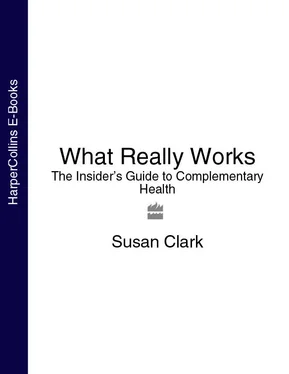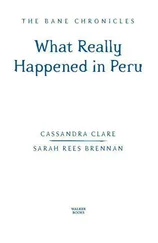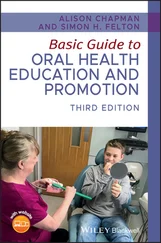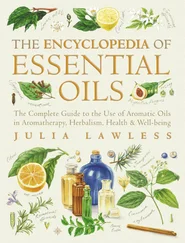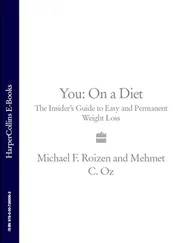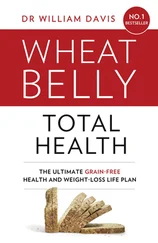One of the biggest criticisms of complementary treatments is that there is no true evidence to show they work. This is rubbish. You just have to dig for it. Of course, most people do not have time to scour the latest scientific papers, read every new health book or talk to the experts, but that is my job. I am never off duty and I love what I do. I consider myself lucky to get paid for it, and even more fortunate to be able to pass what I learn on so that other people can also take responsibility for their own health.
This is not a book you have to read from cover to cover but, if you like, a reference manual which you can dip in and out of at will. There’s an excellent Resources section to help you find the practitioners and products you need to stay healthy, and a comprehensive Bibliography to help you start to build your own ‘health library’, or simply find out more.
Throughout the writing of this book, I’ve had one vivid image in mind. I live in the Chiltern Hills in Oxfordshire, about an hour out of London and opposite a lush green beechwood. As the idea of a book which bridged my twin interests of complementary health and a more sacred way of living took root, I noticed that the early summer foxgloves outside my home were growing with renewed vigour.
One afternoon, while walking my dog, I strayed from the marked footpath and stumbled across a magnificent row of six-footers; standing like sentries guarding the woodland. I had never noticed foxgloves in that spot before and I don’t know if I’ll ever see them again, but what struck me was the realisation that each and every one had it’s roots firmly in the woodland soil and shade but was growing, as fast as it could, towards the light.
I can’t think of a better metaphor for that new and more sacred way of living that so many of us have now set our hearts on. Take a detour from your own fixed path and you too will find yourself reaching away from the shadows towards the light. My wish for my book is that it will be a tool to help other like-minded people find the inner strength to recognise their own journey and embark on it.
Susan Clark
www.WhatReallyWorks.co.uk
part one
Body Works
Food
The Artificial Gut
In a humble laboratory at the Institute of Food Research in the UK, there is a machine which operates exactly like a real human gut. Each day it is ‘fed’ different foods so that the scientists can figure out just what does go on in the human colon. What they are particularly interested in is the balance of the bacteria in the human gut. What, for example, happens to the bacteria which normally help us digest our food when the diet is too high in sugar? How does the artificial gut cope with antibiotics or prescription drugs, including the contraceptive pill? How does a gut that is fed infant formula differ from one that is nourished with human breastmilk, and what happens when the researchers deliberately change the gut flora by introducing man-made molecules that can act as a kind of fast food for the good bacteria and which also work in the body to starve the toxic bad ones?
The work that is quietly going on in this lab is not to be laughed at or dismissed lightly, because if vitamin and mineral supplements were the first wave of getting back to good health in the 20th century, then the secrets of the human gut, which has to process these dietary supplements, holds the key to optimum health in this new century.
It is not right to say ‘you are what you eat’. You are, though, a reflection of how your body absorbs what you eat, and for too many adults in the West, the honest answer when asked ‘how are you?’ is ‘not great’.
This does not mean you are sick. You function. You get out of bed each day, run a household, sort out the kids, hold down a job, but you never feel 100%. You may be tired all the time, your skin may be less than glowing. Maybe you just don’t have the energy to get out there and exercise. However it shows up, you know you could be better.
Digestive disorders are the root cause of 70% of all complaints and health problems, according to naturopaths who treat illness with a combination of nutrition, homeopathy and herbalism. Gut problems now cause more days off work (after the common cold) than any other health problem, and a third of the adult population is troubled by Irritable Bowel Syndrome (IBS), where the symptoms alternate between chronic constipation and diarrhoea.
More frightening is the fact that cancer of the colon is now the second biggest cancer killer after cancer of the breast in women and lung cancer in men. In humans, it is now believed that tumours arise 100 times more often in the large intestine, compared with the small one. What scientists must now find out is whether some of the large intestinal bacteria are actually producing carcinogenic or tumour-promoting compounds as a byproduct of their own metabolism. If this is what is going on, the solution may be as simple as changes to the diet. The progress of a colon cancer is slow, making it more than susceptible to the right kind of dietary intervention.
What to Eat
The message has not changed, so if you care about your health, you will have probably heard it before. If you want to avoid some of the worst toxins now used in the production of nutrient-poor foods from nutrient-robbed soils – and at the last count, there were an estimated 250,000 of them – switch to an organic diet wherever you can.
Organic food has been produced without the use of chemicals to protect the crop from insects or accelerate crop growth, and so while it may have been fashionable of late to join a backlash claiming there is no difference between organic and non-organic food, adopting this view flies in the face of both science and common sense.
Hard evidence that organic food is healthier to eat than conventional crops has now been published by scientists who claim they finally have the proof that plants grown without artificial pesticides and fertilisers contain higher levels of nutrients.
The study is one of the first to confirm what those of us who intuitively support organic farming have long suspected – that organic fruit and vegetables do not just taste better, but offer greater health benefits too.
Researchers backed by Britain’s organic watchdog The Soil Association compared plants grown under strict organic conditions with those grown by conventional farming methods. The team, based at the University of Copenhagen, found that organic plants contained higher levels of vitamins and far more ‘secondary metabolites’ – a family of compounds which help protect plants from outside attack. When eaten in fresh fruit and vegetables, some of these metabolites are thought to lower the risk of cancer and heart disease.
There is no question too, that increasing the amount of raw food in your diet will also make you healthier. This is because a raw food diet will boost levels of the enzymes we need to break down and digest our food, at every stage of this process from the mouth to the gut. Even a short time on a mostly raw food diet can help detox the body, boost energy levels and help normalise the digestive tract. I have included three simple but powerful detox diets in this book (see pages 130, 136 and 147). Try them and watch how, as your health gets better on the inside, this is reflected on the outside as the condition of your skin, hair and nails improve beyond recognition.
For everyday eating, government guidelines in most countries suggest you aim for five portions of fruit and vegetables daily. For optimum health, though, you should actually be aiming for eight. Thankfully, that means eight in total – that is, fruit or veg, not eight of each.
People often get confused about what constitutes a portion. There is no need to fret about exact weights or to spend hours counting the broccoli florets in your raw vegetable side-salad, but as a rough guideline a portion is the equivalent of a slice of bread, half a bowl of rice, half a standard side-salad, a broccoli spear or a small apple.
Читать дальше
